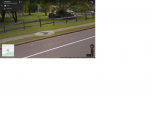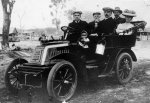Pre-war at least. This photo is apparently in Australia, Queensland I would suspect judging by the architecture of the pavilion and the Araucaria cunninghamii. Interesting also is the use of a bastard hip on the roof of the pavilion. Would also note that if it is indeed in Queensland the screen fence wouldn't last a single cyclone season.
Feel sorry for the poor kid in the sailor suit. I would also speculate that the old girl in the bottom right seems to be picking her nose.

https://en.wikipedia.org/wiki/De_Dion-Bouton


Feel sorry for the poor kid in the sailor suit. I would also speculate that the old girl in the bottom right seems to be picking her nose.

https://en.wikipedia.org/wiki/De_Dion-Bouton


Last edited:




